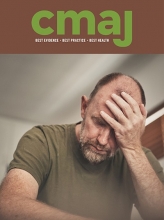It was the early 2000s and my first meeting at a committee in a national medical organization. I walked in and, to my surprise, realized that not only was I the only woman, aside from the administrative staff, I was the only ethnic face. Almost two decades later, medicine has made great strides in enhancing equitable representation among its ranks. Culturally diverse representation in committees and leadership is emphasized. System changes, from specific admission streams for traditionally under-represented groups to support programs for students, now exist in medical schools.1,2 However, the “hidden curriculum,”3 the everyday milieu that teaches students about acceptable values and behaviour in medical life, has been slow to respond.
Medical students in my various small-group learning sessions still share disturbing stories of how they experience the effects of race, gender and wealth differences, not only in society, but also in the medical workplace. One black student described the experience of being stopped by a store clerk as he was walking into the store when the alarm went off, just as a non-black shopper strolled out (Figure 1). Other students spoke of the knots in their guts after being questioned about their “origin” during patient encounters; after the already awkward “Canada” answer, they had become accustomed to expecting the follow-up … “So where are you really from?” (Figure 2).
But I walked IN. Concept by Kennedy Ayoo.
Image courtesy of Kendal Brouet
Where are you REALLY from? Concept by Renata Leong.
Image courtesy of Kendal Brouet
Within the shifting language of medical education, teaching materials with unnecessary details that promote stereotypes have slowly fallen out of favour. “55-year-old black man with syphilis” is now taught as “55-year-old individual with syphilis.” Yet not all teaching materials have recalibrated to accurately and richly portray the lives, and not exclusively the challenges or the otherness, of members of individual cultural groups. Teaching simulations attempt to communicate what diversity means in the context of health care, but often have “thin” scripts that portray only stereotypes. Materials that encourage understanding of varying presentations in diverse populations, like a rash on the skin of a person of colour, are not yet the norm (Figure 3).
Badus Rashus. Concept by Sivaruben Kalaichandran.
Image courtesy of Kendal Brouet
Although culture and race are the more recognized forces in medicine’s hidden curriculum, financial inequity is less discussed. Substantial tuition fees are deterrents for many medical students. Some students take for granted their access to funds for travel expenses, accommodations close to universities and electives,4 but others struggle to meet the minimum. An appropriate suit for an interview may have to be borrowed. The cringing expressions I see on some of my students’ faces when they sit in on conversations about exotic summer plans and global health electives are hard to ignore (Figure 4). So is seeing the same dress shirt on students for weeks, or knowing they lack a steady living place.
Spring Break Dichotomy. Concept by Renata Leong.
Image courtesy of Kendal Brouet
Although these disturbing experiences are commonplace, they are often accepted as the norm of medicine. The “hidden curriculum” implies to practitioners and trainees that belonging to the medical profession is automatically equivalent to being privileged. Yet those who do not share the dominant culture are left “borrowing,” from attitude to money to opinions, to assimilate. The normalized nature of these oppressive experiences leaves little forum for “outsider distress” to be voiced and heard.
The hidden curriculum can be changed but it will not be possible without psychological safety for all involved. Perhaps forums to safely discuss the effects of race and money on being a physician would be a reasonable place to start.
Acknowledgements
The authors thank Professor Fred Hafferty for support and advice. They also thank students of the 2T1 ICE 1 group, including Gina MacDonald, Sivaruben Kalaichandran, Chenchen Tian, Mary Scourboutakos and Emily Bellicoso, Faculty of Medicine, University of Toronto, for their feedback on the initial concept of this manuscript.
Footnotes
This article has been peer reviewed.












